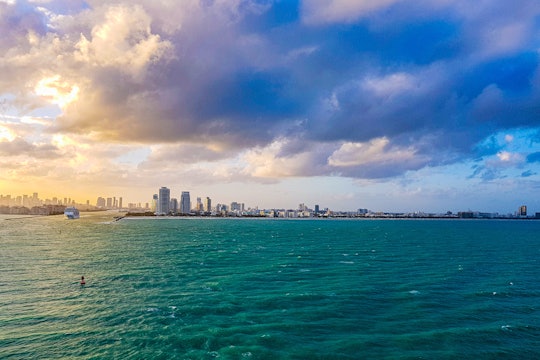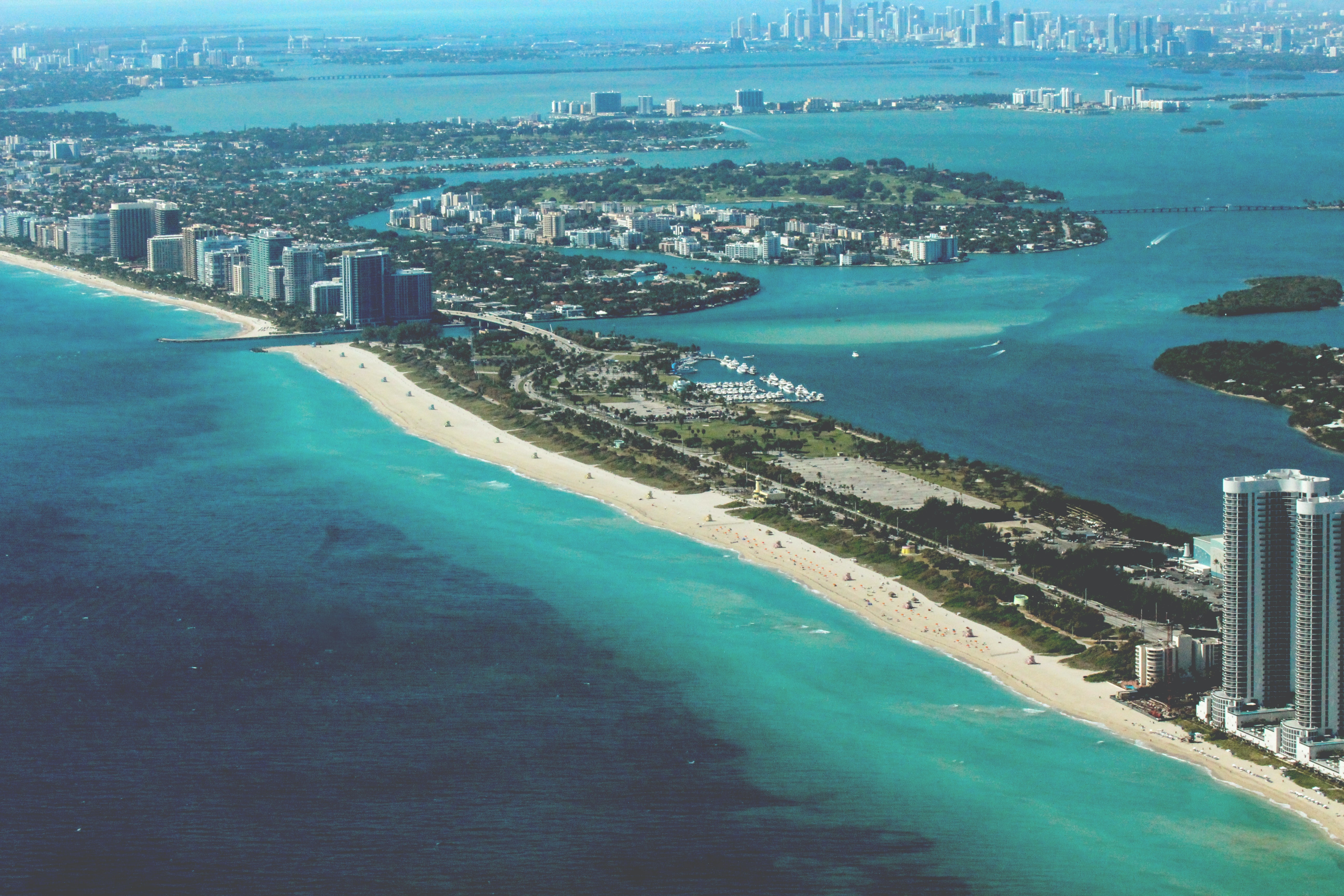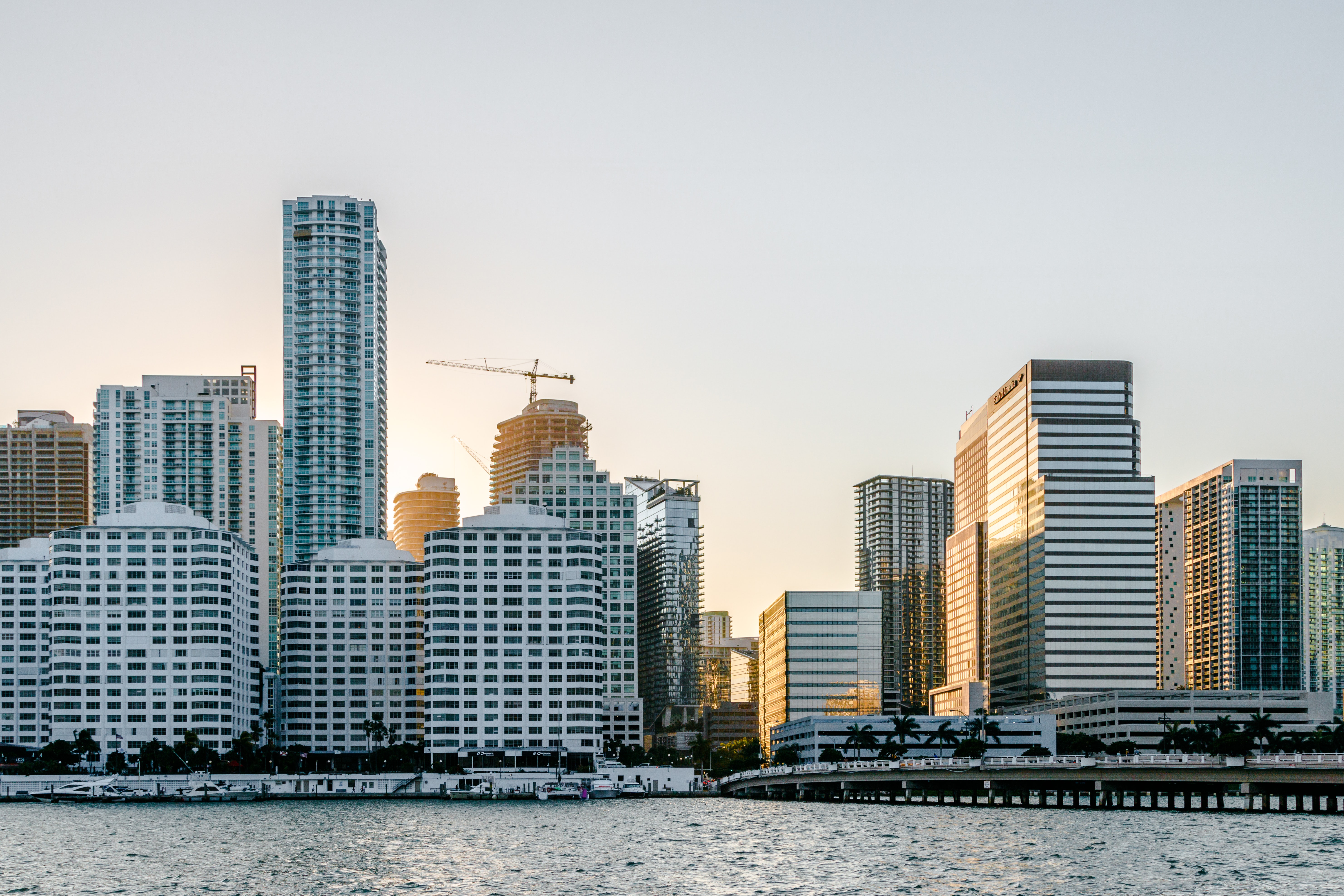
Photo by Ahmet Demiroğlu on Unsplash

A version of this story originally appeared on Yale Environment 360
In Miami, environmental injustice and the ocean tides rise alongside luxury housing
The city's economic divide leaves everyone but the rich vulnerable to climate change, a scene that will play out around the world in the coming decades
There is an inescapable truth about life in South Florida: This low-lying region is set to be swallowed by the sea. An array of powers — municipal, state, federal, and private — have begun to plan and borrow and spend to defend Miami and its environs. But as sea levels steadily rise, the porous limestone rock its residents walk on every day means there is no stopping the Atlantic Ocean.
The sea at the southern end of the Florida Peninsula has risen a foot since the 1900s, and almost 5 inches since 1993. The ocean reclaims chunks of land in the fall and spring during so called “sunny day” floods, which have become four times more common today than 15 years ago. Some scientists say that another 6 inches of sea level rise could very well arrive by 2030, and infrastructure planners are bracing for 2 feet by 2060. Five to 6 feet of sea level rise by 2100 is likely, and likely catastrophic: An inundation of this magnitude would physically displace some 800,000 residents of Miami-Dade County — nearly a third of the current population — and render a large portion of the city uninhabitable.
But the impacts of these intensifying climatic changes — which also include the growing threat of monster hurricanes — will not be felt equally. Unlike the jet-set owners of high-end real estate in Miami-Dade, the region’s middle-class residents — who have most of their savings tied up in their homes — face the prospect of generations of wealth being wiped out when the property market inevitably craters in the face of rising seas. And low-income communities, which during Miami’s initial expansion were shunted away from prime waterfront property and often segregated onto the region’s high ground, now face a fight to hold onto that elevated land as developers covet property situated away from rising seas.
Yet the powers attempting to help the region cope with global warming are barely focused on these inequalities, and that lack of vision could seriously complicate efforts to save South Florida. In fact, mismanaged efforts to adapt could exacerbate a tale of two cities — both sinking.
The science of what is going to happen here — higher seas, increased heat, intensifying storms — is certain. Still, the developers, real estate agents, and many buyers continue to play a long con against the rising tide, pretending that all is well in South Florida, even though some 10 percent of its land area will be under water if the ocean rises just 2 feet. The irrational exuberance of the high-end real estate sector is fed, in part, by foreign investment seeking to park excess capital in luxury, high-rise beachfront condos.
To see why lower-income residents are likely to be on the losing end of the dramatic changes bearing down on Miami-Dade, you need to understand a little about South Florida’s inherent inequality. This is a place that has 35 billionaires — about 5 percent of the U.S. total — and a minimum wage of $8.56 an hour. If you look past the glittering skyscrapers and mega-yachts, you will see that the City of Miami has a relative rate of inequality similar to that of developing countries like Paraguay and Colombia. Forty percent of the households in Miami-Dade County — of which the City of Miami is part — are working poor, with little savings and few assets. Nearly one-fifth live below the poverty line.

Photo by Ashley Satanosky on Unsplash
Those economic divisions are also racial divisions. A 2019 study found “major disparities in wealth accumulation and income across various racial and ethnic groups in metropolitan Miami.” Predictably, non-Latinx white households are by far the most prosperous, with a median net worth of $107,000. The next-closest group, Cuban households, had a median wealth of $22,000.
Miami’s vast racial and economic divisions have been shaped by Jim Crow laws, discriminatory red lining of residential real estate, race riots, and freeways built over bulldozed Black neighborhoods. This created a city where the brownfield sites and urban heat islands are disproportionately concentrated in Black neighborhoods. The worsening heat preys on low-income and minority communities, which are less able to afford air conditioning and do not have as much tree cover as Miami’s richer neighborhoods.
Meanwhile, at the upper end of the socio-economic scale, the Miami real estate market hums along, even as the giant residential real estate firm, Zillow, says the City of Miami — population 470,000 — is home to 26 percent of all U.S. homes at risk from rising seas. According to studies conducted by the Risky Business Project, $15 billion to $23 billion of property here could be underwater by 2050.
That the Miami-Dade property market — both luxury and residential — remains hot has much to do with the flawed risk-pricing of the National Flood Insurance Program (NFIP), a 52-year-old scheme that subsidizes vulnerable coastal development with cheap flood insurance. The NFIP vows to reform its pricing soon, which will mean more pain for the area’s homeowners, but it’s unclear what sort of dent, if any, such a move might put in luxury development.
That’s because the high-end market’s “resilience” in the face of climate change is buoyed by its clientele — the international elite. For them, Miami real estate functions more like a commodities market than a housing market, a place for people to park their wealth, sometimes ill-gotten. This kind of investing results in rates of absentee ownership in the Miami condo market of more than 50 percent, meaning many owners are not in Miami-Dade often enough to experience the regular “king tide” flooding. And if their investments go south because of sea level rise, many of these property owners can simply shrug off those losses.
Further compounding the risk to the region is a massive misalignment in the incentive structure for the businesspeople who build luxury condos. In South Florida, property developers who construct luxurious residential buildings often aren’t the ones stuck owning — and maintaining — the glittering towers they’ve built on the edge of the sea. That ends up being the responsibility of the condo associations.
High-end real estate developers are economic and political powerhouses in Miami. They shape the city’s housing policy. They help elect (or depose, in the case of the county’s last mayor) local politicians. But because they often don’t hold onto the buildings they build for more than a few years, they have little incentive to change their ways in the face of climate upheaval. When I asked Ben Solomon — a real estate lawyer who sits at the nexus of realtors, construction companies, and developers — about the threats posed by global warming, he replied, “I just hope that this thing is far enough away that we have five or six more business cycles left.”
Miami-Dade is already perilously close to experiencing major disruptions from rising seas. For one thing, just 6 inches of sea level rise would threaten the viability of the regional drainage system, which keeps Miami from returning to the swamp it once was. Adapting this system is expected to cost some $7 billion. But while the South Florida Water Management District, which oversees the system, tries to get the funds for an overhaul from the federal government, flooding in middle- and working-class sections of the county that lie farther inland and along the Miami River will worsen.
Should seas rise 2 feet, that increase would render hundreds of thousands of residential septic tanks inoperable because the tanks don’t work when groundwater tables rise along with sea level. Miami-Dade County has 108,000 properties on septic systems, most of them owned by middle-class residents. The county estimates that it would cost about $3 billion to build out a sewer system that reaches everyone, but that figure does not include the cost per homeowner of hooking a house up to the system, which can range from $15,000 to $50,000.
As the sea rises, a battle for Miami’s high ground is taking shape. Known as the Atlantic Coastal Ridge, the land — which averages some 11 feet above sea level, nearly twice the mean elevation in Miami-Dade County — is home to many of Miami’s Black and Afro-Caribbean communities. Developers are now pursuing several major residential and commercial projects on and around the Atlantic Coastal Ridge, including the Magic City Innovation District — a mega-development slated for construction in a low-income, urban core neighborhood of Miami known as Little Haiti. Magic City’s backers are advertising it as a safe bet in an era of climate change.
“This project is on some of the highest land in all of South Florida,” Neisen Kasdin, the former mayor of Miami Beach and the attorney for the project, told me. Magic City’s construction plan promises to create 2,500 residential units, stores, and restaurants, and a public park, all on land that is likely to remain above sea level at least until the end of the century.

Photo by Gaetano Cessati on Unsplash
The median household income in Little Haiti hovers around $39,000 dollars a year, and most of its residents are cost-burdened renters, meaning they pay more than a third of their total income on housing. They could easily be displaced onto lower ground since they are unlikely to be able to remain in a gentrifying neighborhood.
An economic study by Earth Economics, commissioned by a group of local nonprofits seeking to block the development, found that the construction of the Magic City Innovation District would cost residents at risk of displacement by the project some $68 million over 10 years in relocation costs, commuting time, lost job opportunities, and increased flood risks.
And there are at least two other projects like Magic City slated for development in Little Haiti.
“Every week I see them [investors] asking homeowners, ‘When are you going to sell? When are you going to move?,’” said Marleine Bastien, head of FANM, a Little Haiti community organization. “They are formulating a psychological war against those who live in Little Haiti.”
Data on where people from high ground neighborhoods are moving are scarce, but development patterns around the region indicate they are likely to move to low-lying pockets of affordable housing, like Homestead and Western Broward County, vulnerable to rising seas.
So far, the region has not done nearly enough to prepare for the looming climate crisis. Municipalities here have set aside at least $800 million to fight the rising sea. But that is a drop in the bucket of what it will cost to adapt, and only some $100 million of that is earmarked for affordable housing. Miami-Dade County has a plan to quickly build some 2,600 affordable housing units, but it is unclear whether they will be built on the high ground. And the U.S. Army Corps of Engineers has proposed to boost the spending with a $4.6 billion plan to secure Miami from storm surge, but the proposal uses cost-benefit analysis to determine where the adaptations will be built, and it has been criticized for favoring wealthy neighborhoods.
Many of the adaptation projects so far have centered around wealthy neighborhoods. The City of Miami Beach spent some $400 million installing pumps and raising streets around neighborhoods that regularly flooded during high tides.The work, begun under former mayor Philip Levine, initially focused on areas where Levine owned some $20 million in property, according to the Miami Herald. In the City of Miami, new pumps were first installed in Belle Meade, the relatively wealthy — but low-lying — residential district.
To date, the over 100 municipalities in the greater Miami area, population 6.2 million, have yet to devise a coordinated regional plan to deal with climate change, though Miami-Dade county has published a plan called Resilient 305.
A narrow path for survival exists for Miami-Dade, Broward, and Palm Beach counties. It involves equitably sharing the high-ground, orderly retreats from most vulnerable coastal neighborhoods, federal and state adaptation and mitigation initiatives, and, of course, global cuts in greenhouse gas emissions. It is a slim chance, but one that can start by recognizing the need to narrow the gap of climate impacts between the region’s wealthiest and least well-off citizens.
